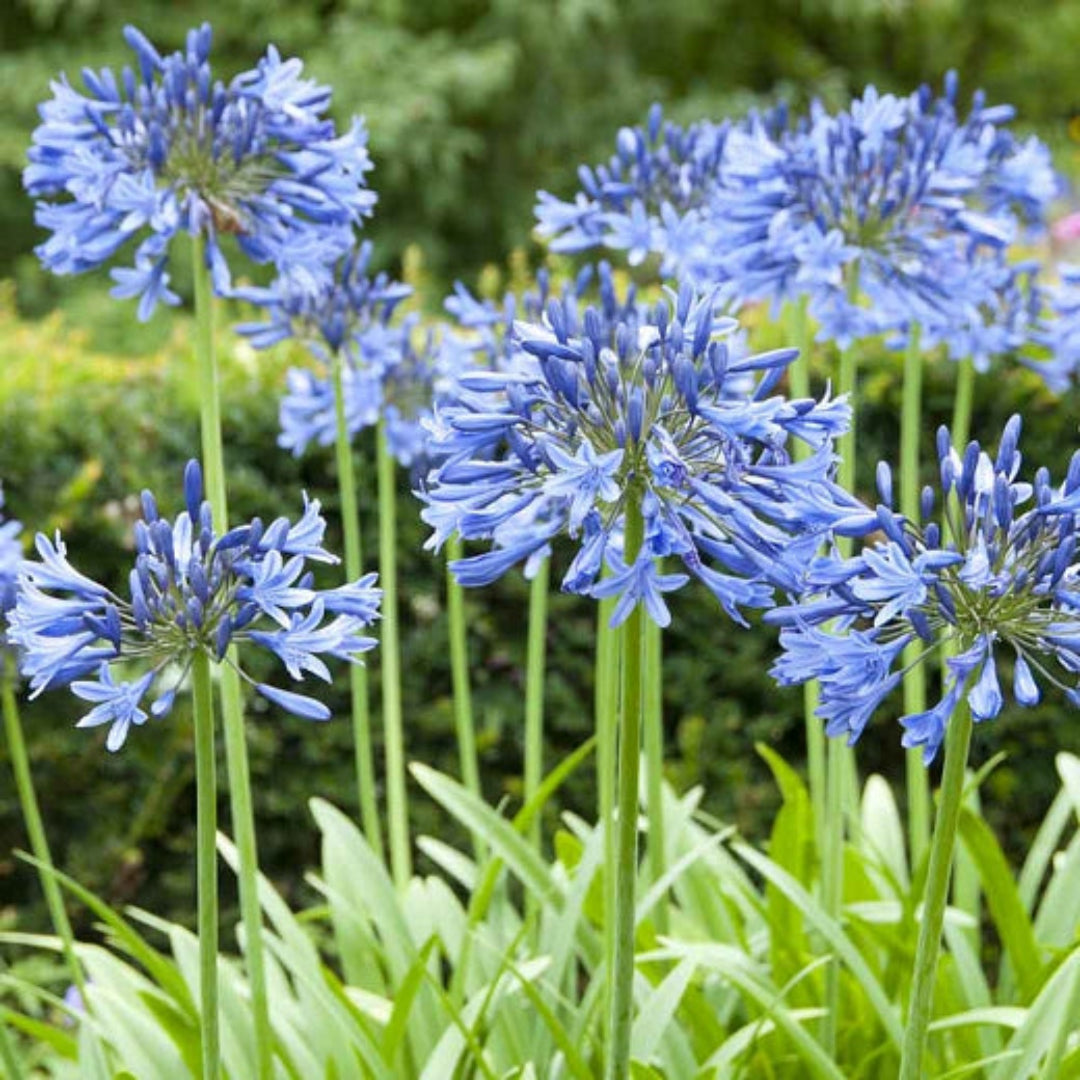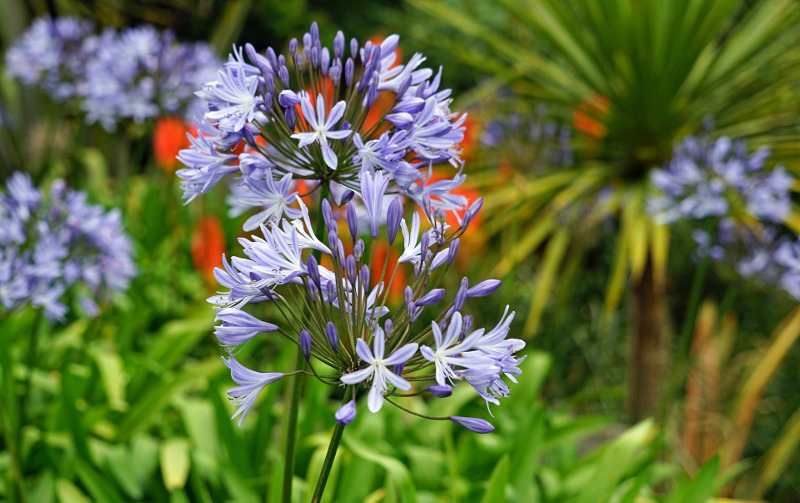Agapanthus Varieties: Selecting the very best for Your Landscape
Agapanthus Varieties: Selecting the very best for Your Landscape
Blog Article
Grasping the Art of Agapanthus Treatment: Essential Actions for Healthy Development and Vibrant Blossoms
In the realm of horticulture, the cultivation of agapanthus stands as a gratifying endeavor for those that look for to support these elegant blooming plants. With their striking blossoms and stylish vegetation, agapanthus has caught the attention of garden enthusiasts worldwide. Nonetheless, accomplishing optimal growth and dynamic blooms needs a nuanced method that encompasses various important actions. From choosing the right range to grasping trimming techniques, the trip towards cultivating prospering agapanthus plants is complex and holds the crucial to opening the complete potential of these organic gems.

Picking the Right Agapanthus Variety

When selecting the ideal Agapanthus variety for your garden, consider elements such as environment viability, blossom color, and growth habit. Agapanthus, frequently understood as Lily of the Nile or African lily, can be found in a selection of colors ranging from tones of blue and purple to white. Select a bloom color that matches your existing yard palette to develop an unified landscape. In addition, consider the environment in your region to guarantee the Agapanthus range you pick can flourish in your details problems. Some ranges are extra forgiving of chilly temperature levels, while others favor warmer environments. Understanding the development behavior of different Agapanthus varieties is important for proper placement within your garden. Some selections have a clumping growth behavior, perfect for containers or boundaries, while others have an even more dispersing nature, appropriate for ground cover or mass growings. By very carefully assessing these variables, you can pick the best Agapanthus range to boost the appeal of your garden.
Suitable Growing Problems
Thinking about the optimum environmental needs is essential for successful Agapanthus growing. Agapanthus plants are delicate to cool temperature levels and ought to be shielded from frost throughout wintertime months.
To ensure healthy development and vivid blossoms, plant Agapanthus light bulbs at a deepness of concerning 2-4 inches and room them 8-12 inches apart. Mulching around the base of the plants helps maintain moisture and suppresses weed development.
Watering and Fertilizing Tips
Keeping correct moisture degrees and offering essential nutrients are crucial elements in the care routine for Agapanthus plants. When it involves sprinkling Agapanthus, it is vital to strike an equilibrium. These plants prefer regularly moist soil however are prone to root rot if overwatered. During the expanding period, water deeply as soon as a why not try these out week, guaranteeing the dirt is well-draining to stop waterlogging. In hotter climates or throughout durations of drought, even more constant watering might be required to maintain the dirt equally damp. Nevertheless, lower watering in the wintertime to prevent water logged problems.
Feeding Agapanthus is necessary for promoting healthy and balanced growth and respected blooms. Use a balanced plant food, such as a 10-10-10 formula, in the early springtime as new development arises. Repeat this application every 6-8 weeks throughout the growing period. Stay clear of excessive fertilization, as it can result in rich foliage at the expense of blooms. Always follow the producer's directions for correct dilution and application methods. By complying with these watering and feeding tips, you can guarantee your Agapanthus plants flourish and produce dynamic, resilient blooms.
Trimming Techniques for Agapanthus
Pruning Agapanthus plants at the suitable times and with proper techniques is essential for preserving their health and advertising optimum development and blooming. The excellent time to trim Agapanthus is in late winter or early spring prior to brand-new development arises.
Deadheading spent flowers can additionally reroute the plant's energy right into creating more flowers rather than establishing seeds. If you desire to gather seeds for breeding, leave some flowers to mature and completely dry on the plant.
Remember to use tidy, sharp devices to make precise cuts and minimize the danger of introducing diseases. Agapanthus. Normal pruning will certainly assist keep your Agapanthus looking healthy and neat while More hints making certain a plentiful screen of stunning blooms
Dealing With Usual Bugs and Illness
After ensuring correct pruning methods for Agapanthus, it is vital to attend to typical parasites and illness that can influence the health and vigor of these plants. Agapanthus plants are generally sturdy but can still succumb to certain problems. One common parasite that affects Agapanthus is the Agapanthus gall midget. This tiny, orange fly lays its eggs in the foliage, bring about distorted development and flower buds that stop working to open up. To combat this parasite, trim her response and destroy any kind of affected plant components and consider utilizing insecticidal soap.
Additionally, Agapanthus plants can endure from origin rot if they are planted in poorly draining soil. By being attentive and taking punctual activity versus diseases and pests, you can help your Agapanthus plants flourish and create lively blossoms. Agapanthus.

Final Thought
In final thought, understanding the art of agapanthus treatment includes selecting the right selection, giving excellent growing problems, proper watering and feeding, ideal trimming methods, and dealing with typical bugs and diseases. By adhering to these important steps, you can make certain healthy growth and vibrant blossoms for your agapanthus plants. Keep in mind to regularly monitor and keep your plants to promote their overall health and durability.
To ensure healthy and balanced development and lively blooms, plant Agapanthus light bulbs at a deepness of about 2-4 inches and area them 8-12 inches apart. By following these watering and fertilizing suggestions, you can ensure your Agapanthus plants thrive and generate lively, lasting blossoms.
One typical bug that impacts Agapanthus is the Agapanthus gall midge. Furthermore, Agapanthus plants can experience from origin rot if they are planted in inadequately draining dirt. By complying with these crucial actions, you can guarantee healthy and balanced growth and vivid flowers for your agapanthus plants.
Report this page